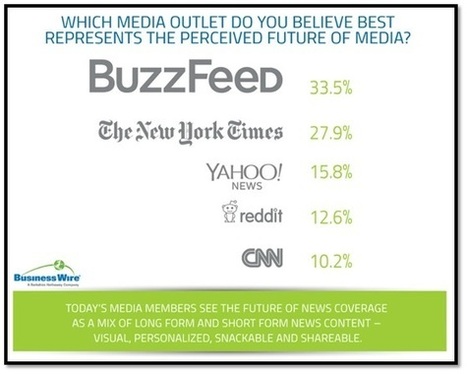Business Wire’s 2015 Media Survey is now available and it offers startling results about how journalists see the future of news media. The landscape of media is changing – new platforms and new styles. The New York Times is an institution but it didn’t start off as one. How will we be referring to BuzzFeed decades from now? Will the two seemingly different lines of media style intersect at some point in the future? These questions are part of the debate regarding the future of media and journalists are split.
According to an article published in The Guardian back in 2013, BuzzFeed is described as an, “irreverent US news and entertainment website taking the social web by storm” and investor Kazz Lazerow, co-founder of Buddy Media, described the website as “the defining media company for the social age.”
Only a few years ago, BuzzFeed represented the wave of change the digital age brought upon news media and that wave has only continued to grow. Now, BuzzFeed is challenging traditional forms of news, jockeying to become the standard of journalism.
When asked to decide between The New York Times style and the BuzzFeed style, journalists made clear that while the classical form isn’t going anywhere, it will have to share its place at the top....



 Your new post is loading...
Your new post is loading...















Unbelievable. "BuzzFeed is challenging traditional forms of news, jockeying to become the standard of journalism."